Spring planting onion sets: terms and rules for planting bulbs on a turnip (head)
Despite the fact that onions are a fairly easy crop to grow, some novice summer residents still often have failures that could have been easily avoided.
Next, we will analyze the main questions and problems regarding how to properly plant onion sets in the spring so that it grows large, what rules of care and cultivation must be followed so that the onion does not shoot, does not become affected by diseases and pests.
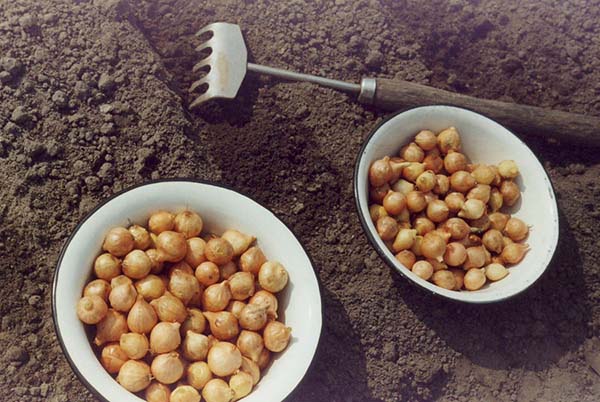
Note! Planting a set and planting an onion on a head (or turnip) is the same thing, and the goal is to get a large onion.
But planting an onion on a feather pursues a lush bunch of greenery.
Content
When and how to plant seedlings in the spring in open ground
So, first we'll figure out when it is better to start planting spring sevka, and then we'll talk about the specific rules for planting onions in open ground.
Landing dates
Naturally, first of all you need to decide with the timing of planting bulbs in the ground.
Advice! We will help you with this this material.
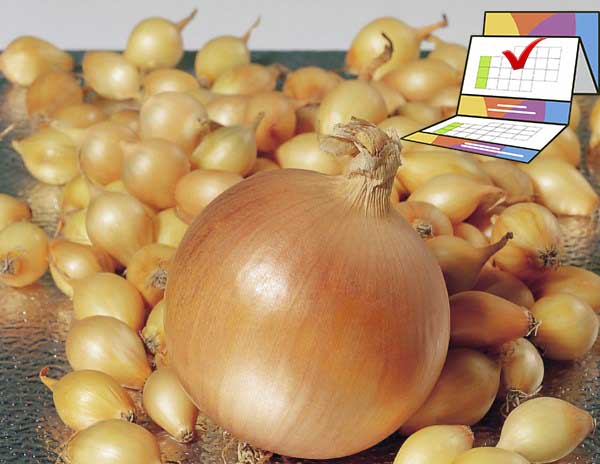
The choice of planting material
First of all, you need to take the most responsible approach to the choice and purchase of planting material, as the saying goes, "What you sow, so you reap."
On sale you can find onion sets sorted by the size of the bulbs, but which one is better to use for planting in spring on the head and feather, it is worth understanding, since the diameter of the bulb directly affects the final result.
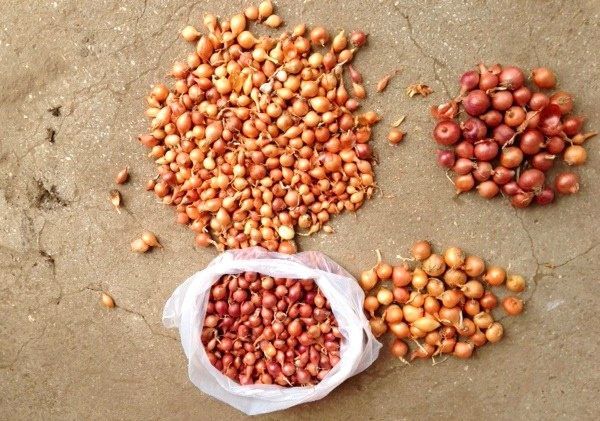
Sowing classification by size (fraction):
- 8-14 mm is the smallest fraction. These bulbs are usually planted autumn before winter... If planted in the spring, the onion will noticeably (2-3 weeks) lag behind in development (from the middle fraction).
Advice! It is better to plant small bulbs on a separate small bed.
Interesting! Small onion sets (up to 1 cm in diameter) are called "Ovsyuzhka ".
- 14-21 mm - medium fraction, ideal for spring planting of onions per head. A bow of this size hardly shoots.
- 21-24 mm - coarse fraction. The bow can shoot.
- 24-30 mm - very large size, suitable only for planting onions on greens.
An even more important qualitative selection criterion is the appearance of the bulbs.
As you know, at the initial stage of development (before the appearance of roots), the onion takes nutrition from the bulb, which means that it should be juicy (filled with juice)enough dense to the touch with light pressure.
Accordingly, soft and loose specimens must be discarded.
You should also select and discard any bulbs that are too small, deformed, frostbitten, dry or rotten. Sprouted bulbs are not at all suitable for planting, because obviously they are already depleted.
Thus, in order to count on a decent harvest of onions, you should carefully examine the seed bulbs before buying and purchase healthy and high-quality planting material.
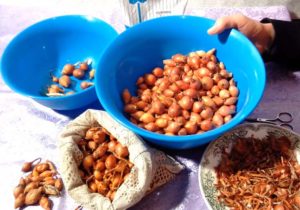
Presowing preparation of bulbs
After you have purchased a set, either got out of storage, it must be properly prepared for planting (especially, in the first case, if the onion is purchased and it is not known how it was stored).
Warming up (from shooting) and soaking the onions before spring planting will avoid many problems (diseases and pests) in the future.
Advice! The site already has a separate detailed article about how to prepare seed bulbs for planting, how to treat them against diseases and pests.
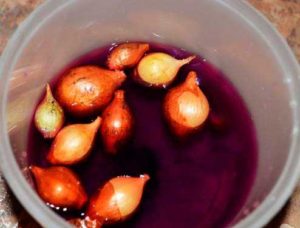
By the way! If you plant onion on a turnip (head), apex (neck) before boarding no need to cut (it is possible, but it makes no sense).
Another thing, if on a feather (green)... In this case pruning will allow getting more even feather and will accelerate the germination process of greens.
Garden and soil preparation
As for the location of the garden, then the place must be sunny.
Obviously, onions will grow better on light and loose fertile soil (loam or sandy loam soil), neutral acidity (pH 6-7).
If you have the soil is too acidic, then it is necessary deacidify in one of the ways.
It is recommended to start the preparation of the site with autumn... To do this, you should dig it to the depth of a shovel (20 cm), remove the roots of perennial weeds and apply organic and mineral fertilizers (per 1 square meter of the bed):
- organic matter: 6-10 kg of rotted manure (humus) or compost;
- potash: 100-200 grams (1-2 cups) wood ash or 20-30 potassium sulfate;
- phosphoric: 30-40 gr superphosphate or 100-200 gr (1-2 cups) bone meal.
If there is no time in the fall, preparation in the spring should be carried out at least 1-2 weeks before planting the bulbs.
In general, you need to make all the same organic (compost or humus, ash) and mineral fertilizersadding to them nitrogen (15-20 gr ammonium nitrate or urea). Or you can do even easier and take a complex mineral fertilizer - the same nitroammophos (30-40 g per square meter garden).
And just before boarding good loosen the beds and cut the grooves (at what distance - read further in a separate paragraph on landing patterns).
Predecessors and neighbors
It will be just great if you follow the rules of crop rotation and rotate crops on your site.
It is most preferable to plant onions in those beds where many organic and nitrogen fertilizers were applied for past crops (for example, after pumpkin).
Advice! The site already has a separate article about after which (what crops) it is better to plant onions in spring and autumn before winter.
As for whether what is better to plant onions, then, as a rule, undersized crops are recommended to be placed next to the same undersized, for example, root crops - with root crops (carrots, beets, celery).
Do not try to plant onions and garlic on the same bed! They have common pests and diseases, and so they will only attract them 2 times more.
Chances are you have heard about it is "ideal" to plant onions next to or even together on the same bed with carrots, for example, alternating rows of carrots and onions. Or plant onions around the perimeter of the carrot bed.
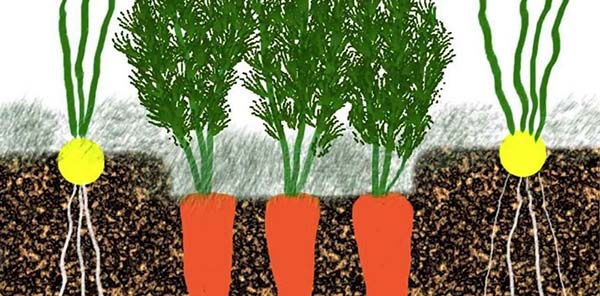
This recommendation is explained by the fact that onions and carrots are very mutually beneficial neighbors: onions will scare away carrot fly, and carrots, in turn, onion.
However! As practice shows, this is just a beautiful theory.
In fact, due to such a neighborhood, the following problems may arise:
- landing too close onions can simply crush carrots, because grows much more actively (faster;
- carrots will be corny uncomfortable thin out;
- carrots require much more frequent wateringthan onion.
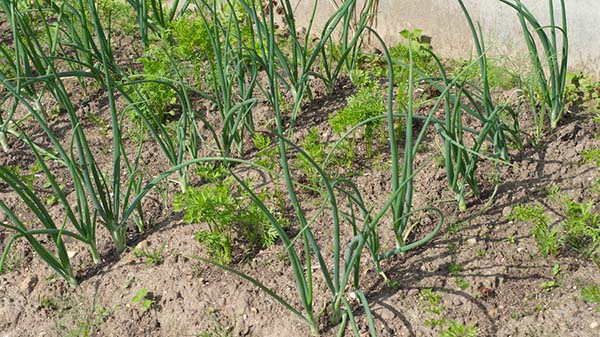
Schemes and rules for direct planting of bulbs
Planting scheme for onion sets:
- The distance between the rows is 20-25 cm (at least 15 cm, otherwise it will not only be inconvenient to care for, but the plants will also lack food space, including light).
- The distance between the bulbs in a row is 5-10 cm (depending on the size of the bulb: the smaller - the more often, the larger - the less often).
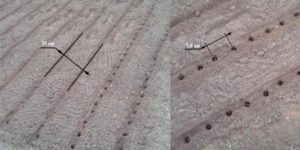
- Planting depth of bulbs - 3-5 cm.
Note! Too deep planting of a set leads to the fact that the plant begins to develop with a delay and, as a result, forms an elongated bulb. On the contrary, due to too shallow planting of bulbs, young roots will constantly dry out and suffer from a lack of moisture.
General tips and rules for planting bulbs:
- Different varieties (red, yellow, white) follows plant separately (in different rows or even beds).
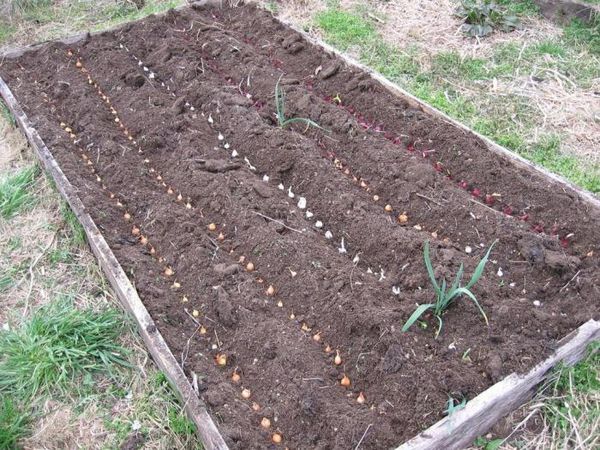
- The grooves are better spill before planting the bulbs, not after (of course, if necessary, the soil is usually still wet during this period).
- You can pour sand (if you have very heavy clay soil) and wood ash (as fertilizer) directly into the grooves, and put the bulbs on top.
From onion fly many recommend pouring into the groove tobacco dust.
- Concerning planting depth of onion setsthen you need bury the bulbs initially exactly on the neck ("shoulders"), so that they only peeking slightly out of the ground, and then sprinkle the groove on top with earth 2-3 cm.
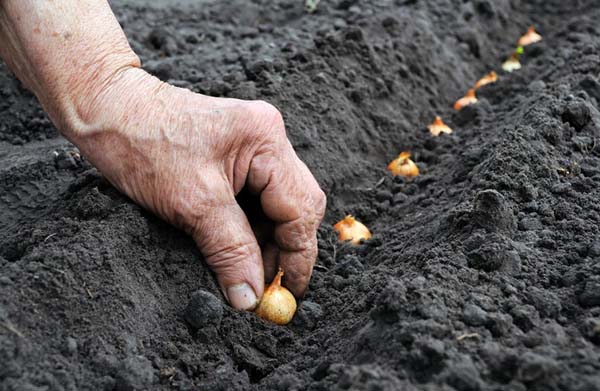
Advice! For guaranteed onion fly protection in the hole, when planting, you can add granules of a special insecticide (for example, "Mukhoed" or "Zemlin").
- Final stage - mulching ... Compost, humus, sawdust... In this case, the layer of mulch should be small (about 3 cm) so that after watering and rain, an earthen crust does not form. Although, it is still better to mulch the onion after sprouting (when they reach a height of 5-10 cm).
A for protection against onion flies and to preserve moisture, you can immediately after planting cover the bed with the thinnest non-woven fabric (the same spunbond with a density of 17 or 30 microns).
Video: spring planting onion sets with soaking in saline
How to care for onions outdoors for a bumper crop
In general, sprouting onions is no more difficult to care for than many other vegetable crops. Namely, you need:
- water correctly (regularly at the initial stage);
Advice! More details about the nuances of watering onions (including when to stop) read in this separate article.
- loosen so that an earthen crust does not form on the surface;
- weed aisles from weeds (of course, if you do not prudently mulch them, then you will also have to water less often).
Onions are a very susceptible crop to weed clogging.
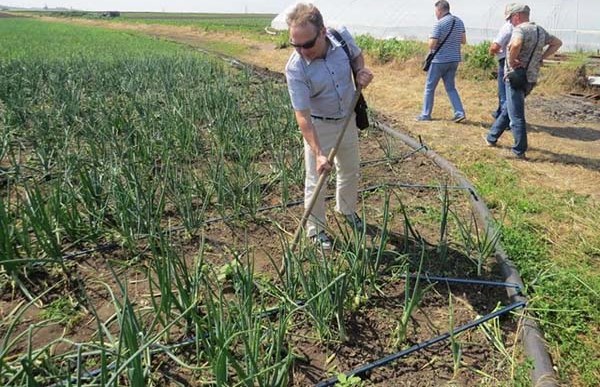
- feed in a timely manner;
By the way! The site already has an article about when and how to fertilize onions in spring and summer.
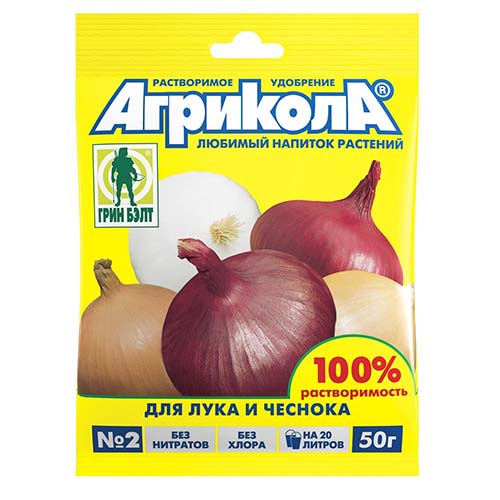
- quickly fight diseases and pests of onions.
The most dangerous pest is onion flour.
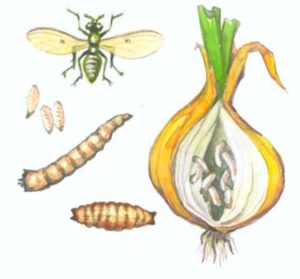
A common disease is peronosporosis (downy mildew).
Treatment with fungicidal preparations Kuprolux, Profit Gold, etc. helps.
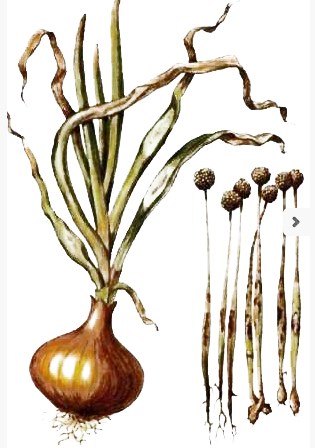
When to harvest and how to store onions in winter
As a rule, onions planted in the fall are harvested approximately 2-3 weeks after the winter one, i.e. around late July-early August (winter is usually harvested in mid-July).
As for how to determine ripening by appearance, a clear sign of the onion's onion readiness for harvesting is feather lodging (the neck of the bulb loses its elasticity), as well as yellowing and drying of the aboveground part (greenery).
Important! On when and how to harvest onions for storage - read here.
A how to store onion sets until spring — in this separate article.
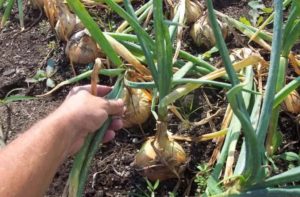
By the way! A after harvesting onions in summer (in July-August), for the same bed you can still plant something.
It is not difficult to grow a good harvest of onions from seed sets, of course, if you carry out a thorough pre-sowing preparation, plant them correctly and take good care of them. Good luck!
Video: how to grow onion sets for a turnip

